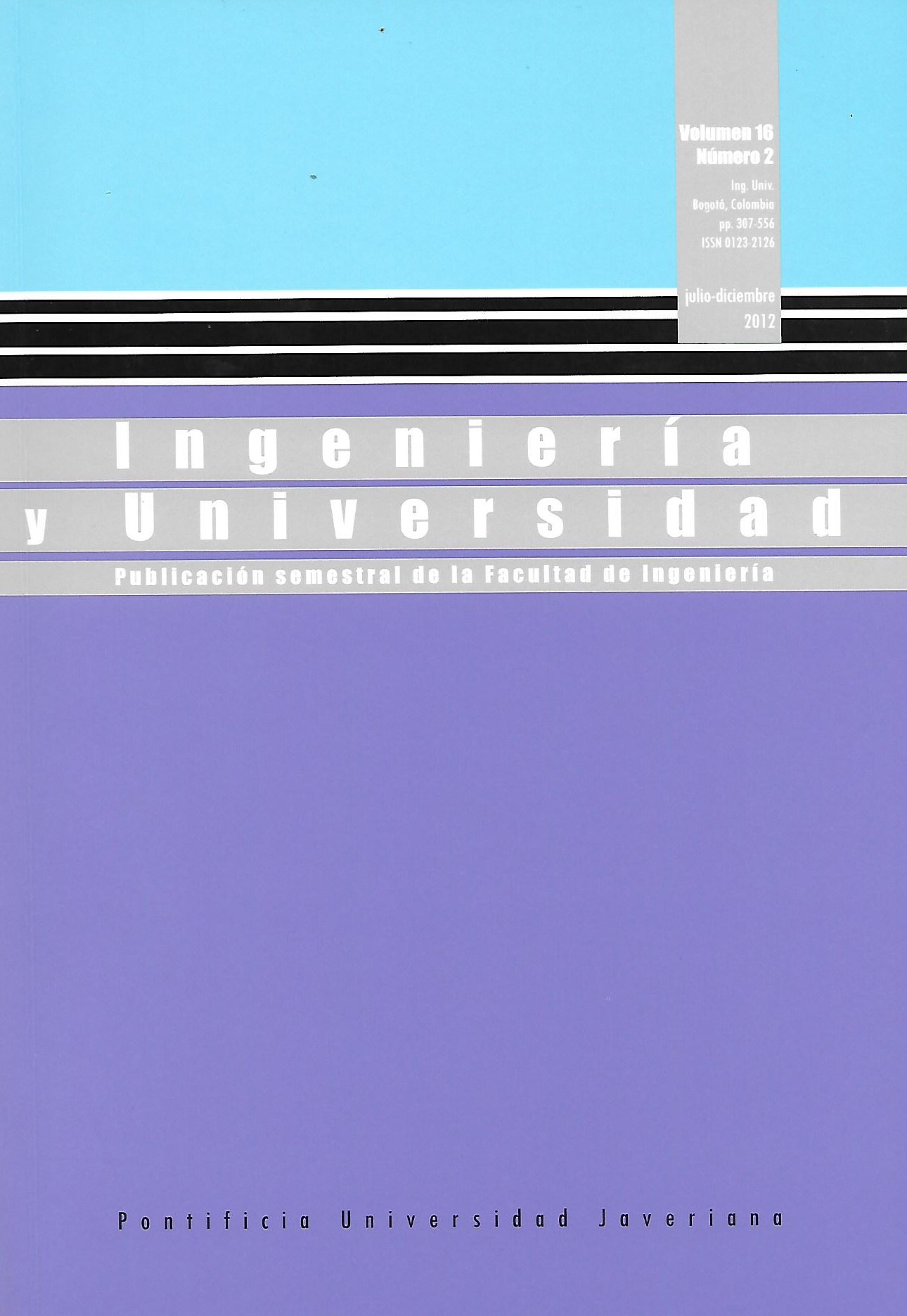Abstract
This paper presents a methodologicalapproach for tuning fuzzy classifiersintended to recognize the Australiansign-language considering twoparticular contexts. We describe thefuzzy classification architecture andthe tuning process based on differentialevolution. The validation resultsshow that it is possible to find a fuzzyclassifier whose classification error isaround 13.0% over a group of wordstaken from several experts for eachinteraction context. This characteristicis relevant as previous works only consideredrecognizing words providedonly by one interpreter.
DE FALCO, I.; DELLA CIOPPA, A.; MAISTO, D. et al. Automatic Recognition of Hand Gestures with Differential Evolution. Applications of Evolutionary Computing. Berling: Springer, 2008. pp. 265-274.
DIMURO, G. P. Hand gesture recognition in an interval fuzzy approach. Sociedad Brasilera TEMA, Tend. Matemática Aplicada e Computacional. 2007, vol. 8 núm. 1, pp 21-31.
ED, U. K. C.; BULL, V. L.; y EDS, J. H. Advances in differential evolution. Computational intelligence. Berlin: Springer, 2008. pp 1-7.
GOH, P. Automatic recognition of auslan finger spelling using hidden Markov models. Undergraduate. Australia: University of Western Australia, 2005.
HOSTOS, H.; SANABRIA, F.; MÉNDEZ, O. et al. Towards a coevolutionary approach for interval type-2 fuzzy modeling. IEEE International symposium on advances in type-2 fuzzy systems. Paris: 2011.
JEYAKUMAR, G., y VELAYUTHAM, C. S. A comparative performance analysis of differential evolution and dynamic differential evolution variants. IEEE World Congress on Nature y Biologically Inspired Computing (NaBIC). Coimbatore: 2009, pp. 463-468.
KADOUS, M. W. Machine recognition of auslan signs using power gloves: towards large lexicon recognition of sign language. Workshop Integration of Gestures in Language and Speech. 1996, pp. 165-174.
MENDEL, J y WU, L. A vector similarity measure for type-1 fuzzy sets. IFSA 2007, LNAI 4529. Berlin Heidelberg: Springer-Verlag, 2007, pp. 575-583.
MENDES, R., y MOHAIS, A. DynDE: A Differential Evolution for Dynamic Optimization Problems. IEEE Congress on Evolutionary Computation. Edinburgh: 2005, pp. 2808-2815.
MEZURA, E.; VELÁSQUEZ, J., y COELLO, C. A. A comparative study of differential evolution variants for global optimization. Genetic Evol. Comput. Conf. (GECCO). Washington: 2006, pp. 485-492.
MORAGLIO, A., y TOGELIUS, J. Geometric differential Evolution. GECCO ’09 Proceedings of the 11th Annual conference on Genetic and evolutionary computation. New York: 2009, pp. 1705–1712.
MUÑOZ, R.; AGUIRRE, E.; CORDÓN, O. et al. Automatic tuning of a fuzzy visual system using evolutionary algorithms : single-objective versus multiobjective approaches. IEEE Transactions on Fuzzy Systems. 2008, vol. 16. pp. 485-501.
NOMAN, N., y IBA, H. Accelerating differential evolution using an adaptive local search. IEEE Transactions on Evolutionary Computation. 2008, vol. 12, núm. 1, pp. 107-125.
PEÑA, C. Coevolutionary fuzzy modeling. Lecture notes in computer science. Berlin: Springer, 2004, pp 51-68.
PRICE, K. V.; STORN, R. M.; y LAMPINEN, J. A. Differential evolution a practical approach to global optimization. Journal of Global Optimization. 2005, pp. 1-37.
SALIZA, N.; JAIS, J.; MAZALAN, L. et al. Sign language to voice recognition : hand detection techniques for vision based approach. Image Processing Formatex. 2006, pp. 967-972.
SHILL, P. C.; AKHAND, M. A. H.; DAS, S. R., et al. Application of evolutionary algorithm in optimizing the fuzzy rule base for nonlinear system modeling and control. IEEE International Conference on Computer and Communication Engineering. Malaysia: 2010, pp. 1-6.
TANAKA, K., SANO, M., y WATANABE, H. Modeling and control of carbon monoxide concentration using a neuro-fuzzy technique. IEEE Transactions on Fuzzy Systems. 1995,vol. 3. pp. 271-279.
VILLATE, A., y RINCON, D. Propuesta e implementación de un método de reconocimiento del AUSLAN basado en un clasificador difuso tipo-2 de intervalo sintonizado con evolución diferencial. Director: Miguel A. Melgarejo R. Universidad Distrital Francisco José de Caldas. 2011.
VILLATE, A.; RINCON, D. E., y MELGAREJO, M. A. Sintonización de sistemas difusos utilizando evolución diferencial. IEEE XVIII International Congress of Electronic and Systems Engineering. Lima: 2011, pp. 1-8.
WANG, L.; ZHOU, N., y CHU, F. A general wrapper approach to selection of class dependent features. IEEE Transactions on Neural Networks. 2008, vol. 19, núm 7, pp.1267-1278.
This journal is registered under a Creative Commons Attribution 4.0 International Public License. Thus, this work may be reproduced, distributed, and publicly shared in digital format, as long as the names of the authors and Pontificia Universidad Javeriana are acknowledged. Others are allowed to quote, adapt, transform, auto-archive, republish, and create based on this material, for any purpose (even commercial ones), provided the authorship is duly acknowledged, a link to the original work is provided, and it is specified if changes have been made. Pontificia Universidad Javeriana does not hold the rights of published works and the authors are solely responsible for the contents of their works; they keep the moral, intellectual, privacy, and publicity rights.
Approving the intervention of the work (review, copy-editing, translation, layout) and the following outreach, are granted through an use license and not through an assignment of rights. This means the journal and Pontificia Universidad Javeriana cannot be held responsible for any ethical malpractice by the authors. As a consequence of the protection granted by the use license, the journal is not required to publish recantations or modify information already published, unless the errata stems from the editorial management process. Publishing contents in this journal does not generate royalties for contributors.


